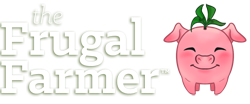Deciding to have a child is a really big, life altering decision. And it’s one that will definitely impact your finances. Not necessarily in a positive way either. Of course, becoming a parent is awesome. But, if at all possible, it’s best to go into parenthood with your eyes wide open about the financial ramifications. Especially because the most recent statistical reports show that raising a child costs between $12,000 – $14,000 annually here in the United States. In this respect, budgeting ahead of time is a great way to embark upon parenthood. Especially if you have an idea as to how much a baby costs in just the first year alone.
In the first year, you are more likely to incur a larger percentage of these costs due to a few fairly common factors.
CHILD BIRTH COSTS
The most expensive part of having a baby is the actual giving birth process. In fact, he majority of the costs come from this category alone. And how much you end up spending can vary widely, depending upon:
- Vaginal or C-section
- Insured or not, and insurance coverage
- The state you live in
If you have a vaginal birth, the range can be between $4,900 – $10,700, if you have insurance. But if you don’t have insurance, then the costs can range between $9,015 – $19,800.
If you have a C-section and have insurance, the costs can range from $7,500 – $15,000. But if you don’t have insurance, then you’ll be looking at a much higher range between $12,600 – $28,500.
I had vaginal births and used midwives for my children, so my costs were actually below the lowest number above. While some things, such as using a midwife or more natural childbirth methods can be within your control, every experience will be different. So, if you want to reduce costs in this category, think about alternative methods to the more traditional hospital, drugs and surgery, whenever possible.
FOOD COSTS
Before children came, our food costs were a bit higher than average anyway. This is due to the fact that I have Celiac, am vegetarian and eat an organic diet. But, once children came around, the costs definitely increased. Luckily, as the children got older, we learned how to save a bundle on groceries but not skimp on quality.
Even though we eventually figured this out, having a new baby in the house can increase the food budget also. This is something that a lot of people don’t even think about, but there are a few reasons why this is.
This is due to a few things:
- Breastfeeding requires a higher maternal caloric intake
- Formula costs can be astronomical if you can’t breastfeed
- Solid baby food can be pretty pricey, even if you make it yourself
For most women who are breastfeeding, the increased caloric intake hovers around an extra 500 calories per day. These extra calories just to account for the body processes needed to produce the milk, which translates to an extra 20% more. Which means that you’ll need to budget an extra 20% into your grocery budget for the extra food needed.
If you can’t or don’t want to breastfeed, then you’ll be looking at formula feeding. The costs for this option will certainly be higher than breastfeeding. In fact the average costs to formula feed are between $1,138 – $1,188 per year.
Once your baby is old enough for solid food to be introduced, you’ll be looking at even more costs. The baby will still be on either breastmilk or formula at this time, so these costs will be in addition to the already aforementioned. Typically, baby food runs close to $1 per jar. And depending upon the age of the baby, they can eat anywhere from 2 – 5 jars a day.
This can translate to an extra $60 – $150 per month for solid baby food on top of the breastfeeding or formula costs. If you want to save a little bit of money in this category, breastfeed whenever possible and make your own baby food at home. Both can be much more time consuming, but can save you a bit of money in the long run for first year baby costs.
insurance BABY COSTS
One the baby is born, you’ll need to add them to your insurance plan. Just this action alone will cause your insurance premiums to increase. But just how much they will increase will depend upon your individual health insurance policy.
Due to each policy being unique, just how much your premium will increase can swing widely. But, the average rate increase per month typically runs between $250 – $400. Which means you can potentially be looking at spending an average of $3,000 – $4,800 more per year!
Please note that this increased cost still doesn’t account for the possible higher deductible you may have due to the increased family size.
CHILD CARE COSTS
Besides the birth of the baby, child care costs usually come in second with regard to overall increased costs. This is especially true if this is your first child. These costs alone are enough to make people start sweating because of the astronomical costs associated.
According to a recent report compiling data regarding child care expenses, the average a married couple spends on child care is 10% of their income. This number drastically increases if you happen to be a single parent to 36% of your income. What this typically means is that the average family is spending between $10,000 – $20,000 per year just for child care alone.
As someone who was a single parent, I can tell you that I certainly couldn’t afford to do this, which is why I only worked part time when I could find free help with my friends and family for my kids.
CLOTHING & Necessities COSTS
For those of you who haven’t spend much time around babies, they tend to require a lot of clothes. They are growing like crazy in the first year of life, plus they have a ton of accidents regularly. This means a lot more wardrobe changes than you may have ever considered could even be possible.
Depending upon the season when your baby is born and where you live, the average cost for baby clothes runs around $60 per month. However, this number doesn’t include other things you need for them such as:
- Hairbrush
- Haircuts
- Blankets
- Bedding
- OTC medicine
- Shampoo
- Soap
- Toothbrush
- Toothpaste
- Washcloths
Adding these things into your monthly budget can add an average of an extra $40. This means you may be looking at around $100 per month, or $1200 annually, for clothing and necessities.
Diapers
Don’t forget the diapers, because those can be pretty darn expensive also. I used cloth diapers for my kids, along with the wet washing method. So all I needed were the cloth diapers, a 5 gallon bucket and Borax. Since babies grow so much the first year of life, I needed 2 different sized adjustable diapers. The diapers ended up costing close to $500, which may sound like a lot, but it’s nothing when you compare it to how much disposable diapers cost. The current average cost of disposable diapers runs an average of $846 per year. This doesn’t include the wipes either, of course.
Overall baby costs
Ultimately, the bottom line regarding how much a baby costs in the first year can vary a lot. This depends upon a lot of different variables, such as:
- Child birth = $4,900 – $28,500
- Food = $1,320 – $2,988
- Insurance = $3,000 – $4,800
- Child care = $10,000 – $20,000
- Clothing & Necessities = $1,200
- Diapers = $500 – $846
That is a grand total (on average) of $20,920 – $58,334!
While this may seem like a huge chunk of money, budgeting ahead of time can help reduce the financial stress. And so can finding some good, frugal ways to reduce the overall costs on your end. By getting creative, you get to enjoy your baby and less financial stress.
How much did you find your baby costs to add up to in the first year alone?








